Introduction
Autism Spectrum Disorder (ASD) presents a complex array of challenges that affect individuals and their families in profound ways. Understanding the nuances of this neurodevelopmental condition is crucial for providing effective support and intervention. From the diverse symptoms and abilities encompassed within the spectrum to the intricate blend of genetic and environmental factors that contribute to its development, ASD requires a tailored approach to diagnosis and treatment.
Early intervention, personalized care, and community support play pivotal roles in enhancing the quality of life for those affected. This comprehensive guide delves into the definition, causes, impact, and myths surrounding ASD, offering valuable insights and resources for parents, caregivers, and advocates dedicated to fostering an inclusive and supportive environment for autistic individuals.
Definition and Criteria of Autism Spectrum Disorder
Autism Spectrum Disorder (ASD) is a complex neurodevelopmental condition that presents a wide array of challenges in social interaction, communication, and repetitive behaviors. The Diagnostic and Statistical Manual of Mental Disorders, Fifth Edition (DSM-5) provides standardized criteria for diagnosing ASD, which include persistent deficits in social communication and social interaction across various contexts, coupled with restricted, repetitive patterns of behavior, interests, or activities. It's important to note that children with ASD might not exhibit all the behaviors typically associated with the condition. ASD encompasses a broad range of symptoms and abilities, leading to diverse experiences among people. For instance, some may struggle significantly with social interactions, while others might excel in certain areas but face challenges in different contexts. This range of differences highlights the necessity for customized strategies in support and assistance, ensuring that each person's distinct needs are addressed.
Causes and Risk Factors of Autism Spectrum Disorder
The precise causes of Autism Spectrum Disorder (ASD) continue to be a complex puzzle, with research indicating a blend of genetic and environmental influences. Although no single gene has been pinpointed, studies suggest that individuals with ASD might possess irregular segments of genetic code, inherited or arising as new mutations, particularly in non-coding regions of the genome that regulate protein production. According to a study in Cell Genomics, these genetic components, including 'de novo' gene variants, play a crucial role in ASD's heritability, which is notably intricate and not entirely understood.
Environmental factors also contribute significantly. Advanced parental age, especially paternal, has been linked to a higher risk of ASD in offspring. Research highlights that older fathers are more likely to father children with ASD, potentially due to genetic mutations that increase with age. Additionally, prenatal exposure to certain substances and complications during birth are implicated as potential risk factors.
It's important to dispel myths around vaccines, parenting style, or nutrition as causes of ASD. Instead, the focus is on understanding how these genetic and environmental factors interact. For instance, complications during pregnancy or delivery, such as viral infections or metabolic imbalances, may disrupt brain development, leading to ASD.
Furthermore, screening for developmental delays is crucial. The CDC suggests autism-focused evaluations at 18 and 24 months, which can assist in early detection and support. Early diagnosis, supported by professional observation and developmental assessments, is vital for effective intervention, helping to address communication, behavioral, and social challenges associated with ASD.
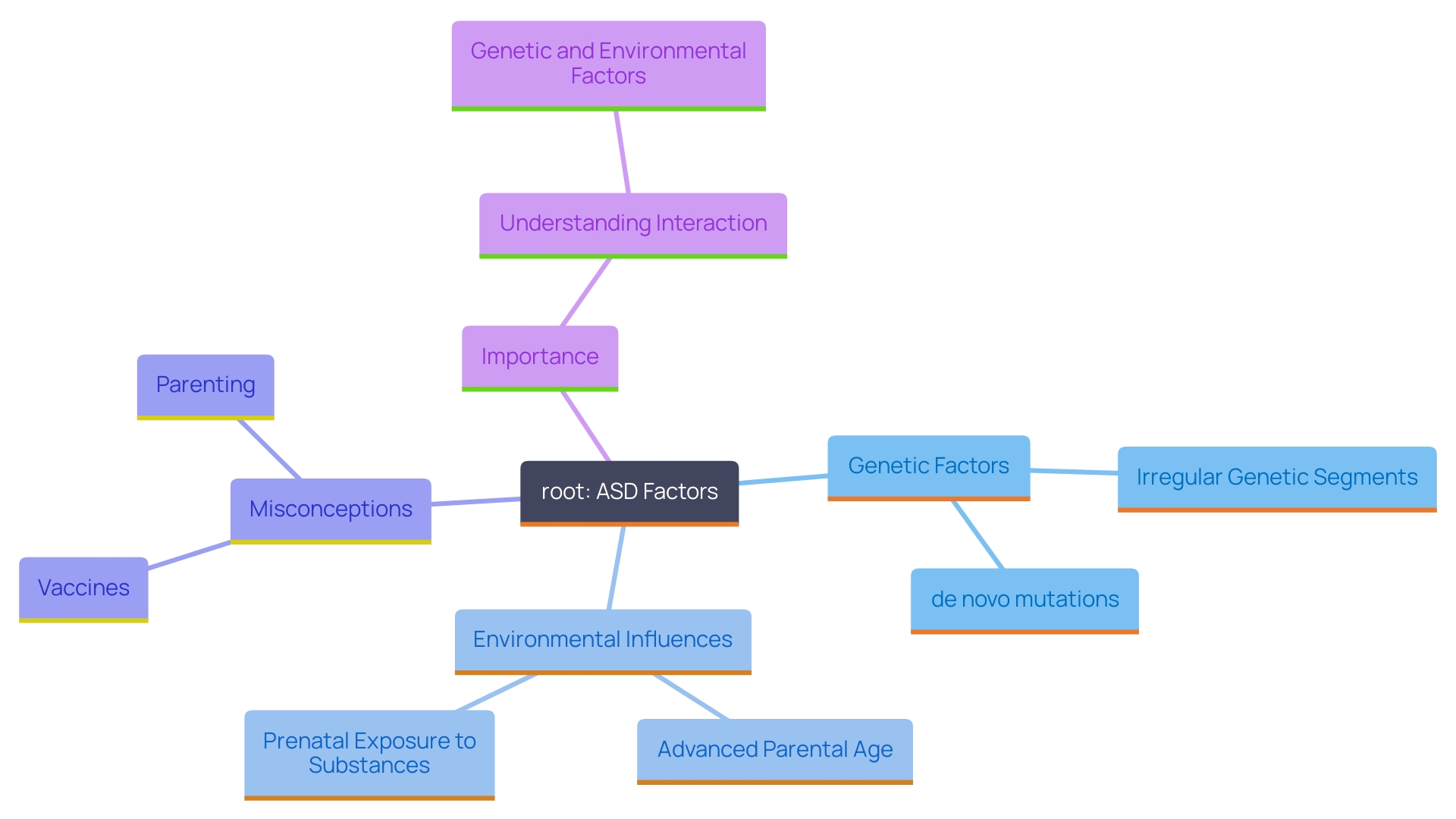
Impact of Autism Spectrum Disorder on Individuals and Families
Autism Spectrum Disorder (ASD) extends its impact beyond individuals, significantly affecting families and communities. Those with ASD often face daily challenges in communication and social interactions. Families navigate a complex emotional landscape, ranging from concern to frustration, as they strive to assist their loved ones. Access to resources, assistance systems, and community understanding is vital in alleviating these challenges and improving overall well-being.
The complexity of ASD generates specific care demands that require time, energy, and often the designation of a family member as the primary caregiver. This can result in parental stress because of financial issues, worries about the child's future, and absence of social assistance. Diverse evidence shows that social and peer support can help alleviate these families' distress by promoting emotional support and information exchange, contributing to family well-being, and reducing anxiety and collective stress.
Emerging research highlights that depression, suicidality, and other mental health disorders are more common among autistic people compared to the general population. Despite this, people with neurodevelopmental conditions have often been excluded from mental health research, resulting in fewer tailored treatment options. Addressing these gaps, new integrated care approaches are being developed to assess and treat anxiety, depression, and other health aspects in neurodiverse people.
The necessity for a variety of personalized tools, interventions, services, and assistance is highlighted by autistic individuals and their families. A one-size-fits-all approach is inadequate to address the diverse experiences and challenges across the spectrum of ability and disability. Increasing equity and reducing disparities in access to resources and care are critical, especially for underserved communities.
Projects like the Adult Autism Health Resources initiative, supported by the Nancy Lurie Marks Family Foundation, aim to improve autism care and the lives of autistic adults and their families. Educating clinicians, caregivers, and self-advocates is essential for leading meaningful change across healthcare systems. According to the Centers for Disease Control and Prevention, an estimated 1 out of 45 adults in the U.S. has ASD, underscoring the need for competent, coordinated care across medical specialties and lifespan transitions.
Overall, comprehending and tackling the multifaceted impact of autism on people, families, and communities is vital for fostering empathy and promoting better support and inclusion for those affected.
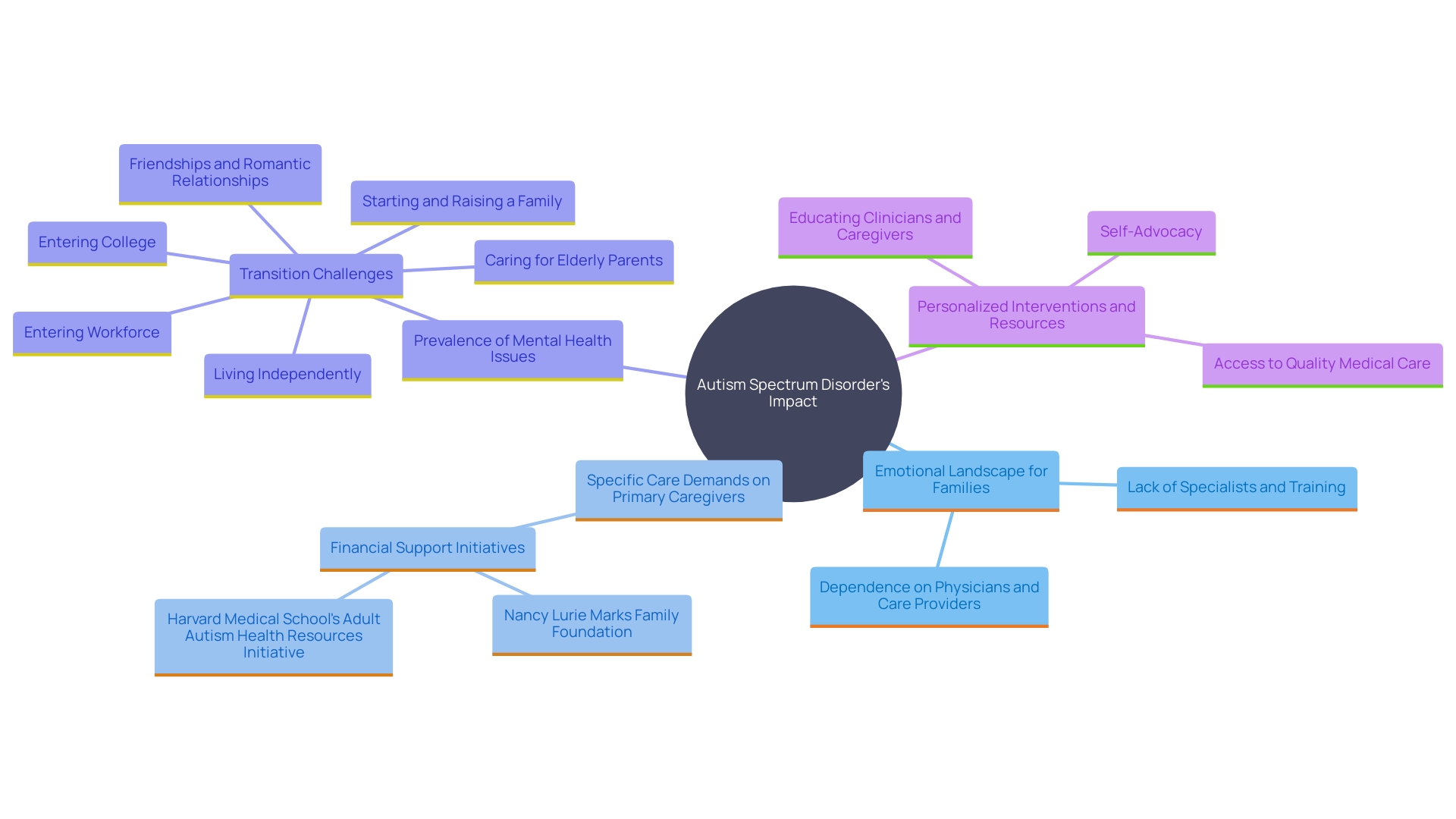
Debunking Myths and Misconceptions About Autism
Myths and misconceptions about Autism Spectrum Disorder (ASD) often contribute to the stigma and misunderstanding surrounding this condition. One prevalent myth is that people with autism lack empathy. In reality, autistic people may process emotions differently, which can influence their social interactions but does not equate to an absence of empathy. Research indicates that developmental interventions can significantly enhance social communication among autistic people, emphasizing their ability for emotional connection.
Another common misconception is that all people with autism have intellectual disabilities. While some may have cognitive challenges, many autistic people possess average to above-average intelligence. For instance, early interventions have demonstrated the ability to promote positive long-term outcomes, particularly when customized to personal needs. This underscores the importance of recognizing the diverse abilities within the autism spectrum.
Addressing these myths is crucial for fostering acceptance and support. According to Cody Clark, an autistic self-advocate, despite advancements in awareness, there remains a significant gap in job opportunities for autistic people, with only 21% being employed. This statistic illustrates the broader societal challenges that stem from misconceptions and biases.
Moreover, it's essential to acknowledge that while autistic people communicate differently, these differences should be accommodated rather than stigmatized. 'Failure to do so can exacerbate health and social challenges, contributing to the lower life expectancy observed among those with autism due to increased rates of chronic health conditions and mental health issues.'.
To build a more inclusive society, it is vital to dismantle these myths and provide accurate information about autism. This facilitates improved assistance and integration for autistic people, ultimately nurturing a community where everyone can flourish.
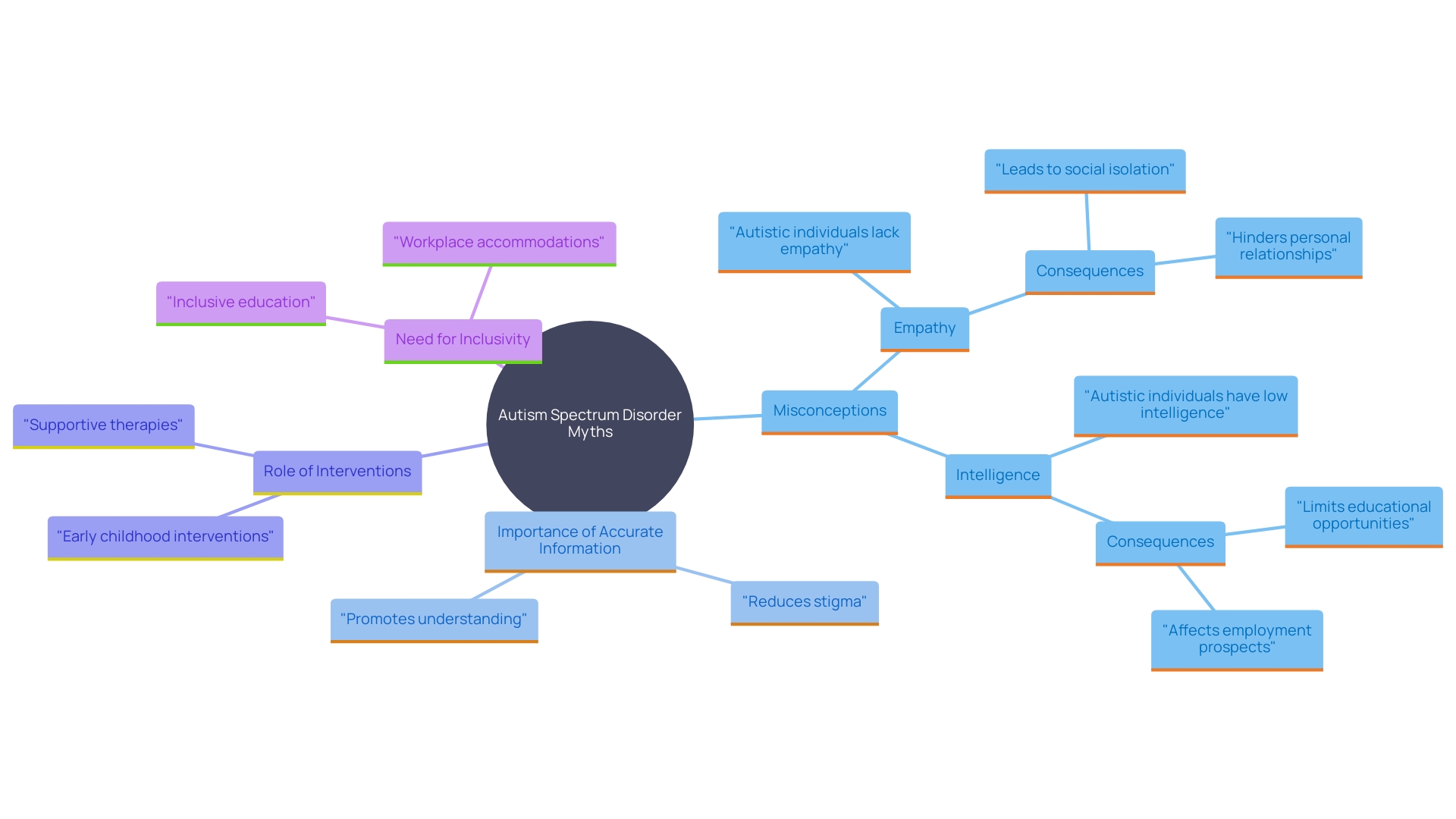
Understanding the Spectrum: Different Types of Autism
The term 'spectrum' in Autism Spectrum Disorder (ASD) highlights the broad range of symptoms and abilities among individuals. Some may need considerable assistance, while others are highly independent and skilled. Classifications within the spectrum include Autistic Disorder, Asperger's Syndrome, and Pervasive Developmental Disorder Not Otherwise Specified (PDD-NOS). Acknowledging these differences is essential in offering suitable assistance and measures. Recent studies indicate that developmental strategies can enhance social communication and lessen fundamental difficulties linked to autism, especially in exchanges with caregivers. However, it's essential to monitor and report these actions to weigh their potential benefits against possible adverse effects. Prompt action is often suggested, as roughly 1-4% of the population is impacted by autism. Pediatricians play a vital role in guiding families to appropriate early childhood support, which can vary widely in approach and intensity. For example, the United States often advises early intensive behavioral treatment, while the UK endorses lower-intensity methods such as pediatric autism communication therapy and JASPER. Grasping these different categories and strategies can assist in customizing assistance to address the specific requirements of each person on the spectrum.
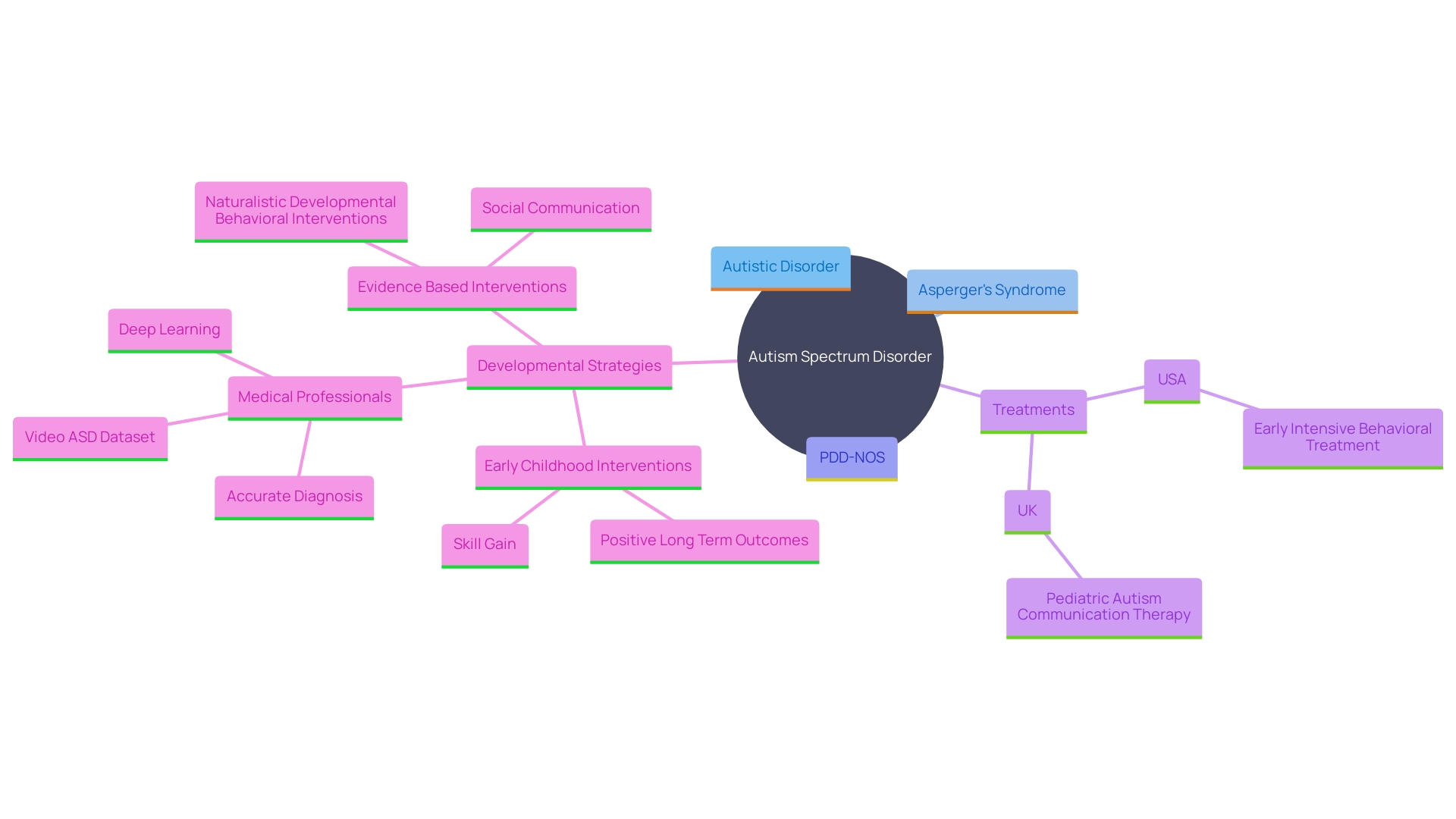
Diagnosis and Assessment of Autism Spectrum Disorder
Diagnosing Autism Spectrum Disorder (ASD) involves a comprehensive evaluation by a multidisciplinary team, including psychologists, speech-language pathologists, and pediatricians. This process typically encompasses developmental screenings, behavioral assessments, and detailed parental interviews to gather insights into the child's developmental history and behavior. According to the Centers for Disease Control and Prevention (CDC), about 1 in 36 children in the U.S. are diagnosed with autism, with reliable identification possible as early as the second year of life. However, the median age of diagnosis remains over four years, often delayed further for children from minority backgrounds and underserved regions.
The importance of early diagnosis cannot be overstated. Prompt identification enables timely assistance, which is essential for utilizing the neuroplasticity of young children to aid their development. Sadly, wait periods for diagnostic assessments often surpass a year because of a lack of specialists, thereby postponing crucial early assistance. These delays can impede the child's social communication skills and overall development, highlighting the need for new community-based care models to improve access to diagnostic services.
Recent research has examined training primary care practitioners to identify autism, potentially reducing wait times and enhancing early support access. Early intensive behavioral strategies, such as those recommended in the United States, show significant benefits. For instance, naturalistic developmental behavioral approaches have been shown to enhance social communication, adaptive behavior, and language skills among young children with autism.
As noted by the esteemed child psychiatrist David (Dan) R. Offord, the engaged and well-supported participation of children with disabilities in school, home, and community life is crucial for their mental health and equity. Ensuring that caregivers have the necessary resources to support their children is fundamental to their well-being and development. Therefore, timely and precise diagnosis along with suitable actions can significantly impact the lives of children with autism and their families.
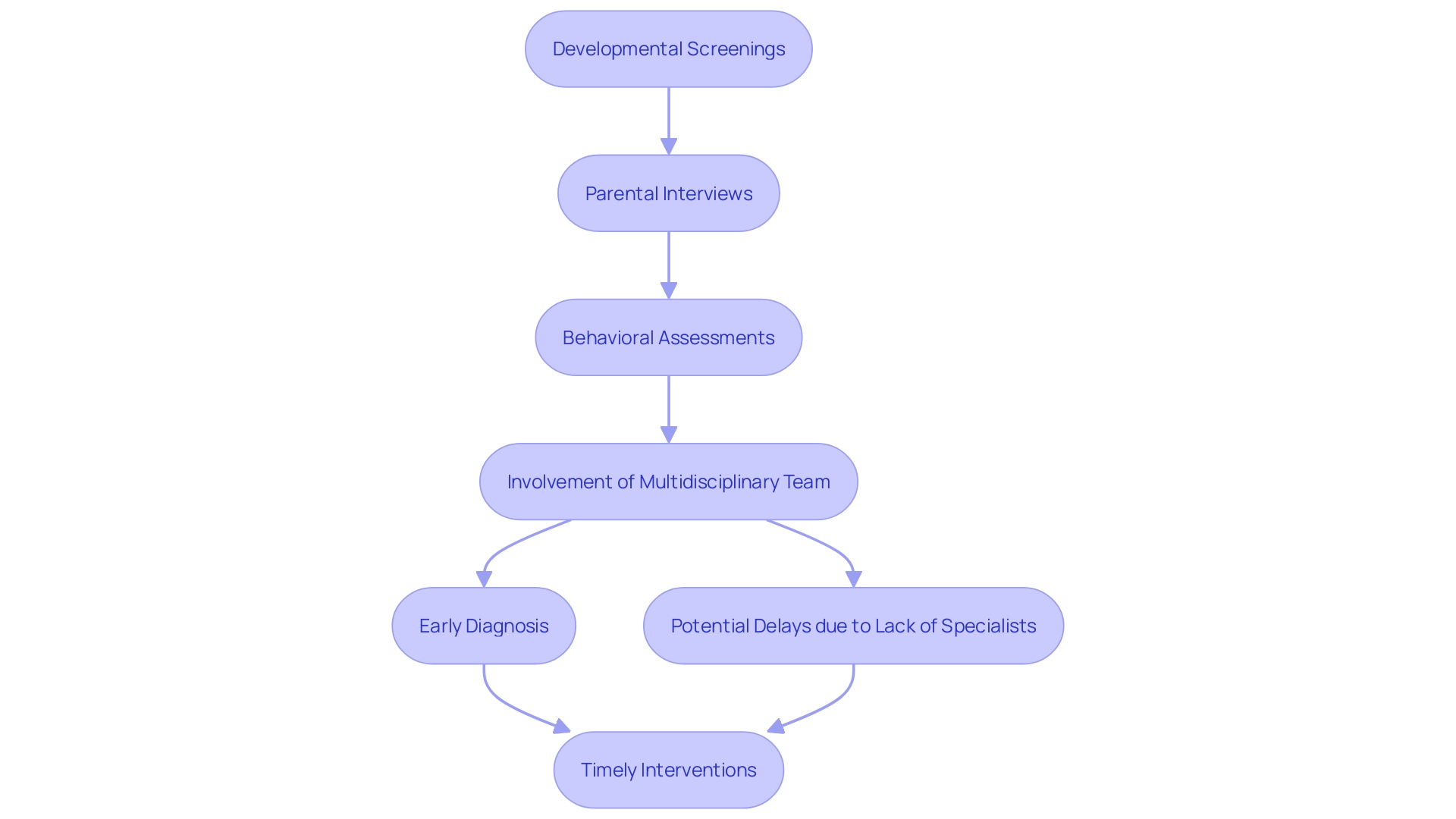
Treatment and Intervention Strategies for Autism Spectrum Disorder
Efficient therapy and support approaches for Autism Spectrum Disorder (ASD) are varied and tailored to meet the specific requirements of each person. One of the primary approaches is Applied Behavior Analysis (ABA), which focuses on improving specific behaviors such as social skills, communication, and adaptive learning skills through reinforcement techniques. Speech and language therapy is another crucial intervention, designed to address communication challenges by enhancing verbal and non-verbal skills.
Occupational therapy plays a significant role in assisting people with ASD develop the skills necessary for daily living and independence. This therapy often includes sensory integration techniques, which assist children in managing sensory sensitivities and improving motor skills. Social skills training is also essential, as it helps individuals with ASD learn how to interact appropriately with peers and adults, fostering better relationships and social understanding.
Research has indicated that early support is essential for attaining the best results for children with ASD. According to studies, early intensive behavioral treatments, characterized by 20-40 hours per week of therapy, can significantly improve functional skills and promote positive long-term outcomes. Developmental strategies, such as naturalistic developmental behavioral approaches, have also been proven effective in enhancing social communication and adaptive behavior.
Organizations such as The Autism Community in Action (TACA) highlight the significance of early diagnosis and support. Programs aimed at identifying ASD in very young children are critical, as they allow for timely support and resources to be provided to families. Additionally, federal advisory committees like the Interagency Autism Coordinating Committee (IACC) work to improve coordination and communication across various sectors, ensuring that research and services are effectively addressing the needs of the autism community.
Overall, the goal of these interventions is to empower those with ASD by enhancing their communication, social skills, and daily living abilities, thereby enabling them to reach their full potential and lead fulfilling lives.
Supporting Autistic Individuals in Society
Creating a supportive environment for individuals with Autism Spectrum Disorder (ASD) is essential for their integration and success within society. This involves promoting awareness, understanding, and providing appropriate resources. Based on recent data, autism impacts around 1 in 36 kids and an estimated 2.2% of adults across the country, highlighting the necessity for thorough assistance systems.
One effective strategy is to foster inclusive practices in schools and workplaces. Evidence suggests that early childhood interventions, such as naturalistic developmental behavioral interventions, can significantly improve social communication, play, and adaptive behavior, providing a strong foundation for future success. Schools and workplaces can further support autistic people by implementing programs that address these core challenges.
Promoting community participation and accepting diversity can greatly improve the quality of life for autistic people and their families. Initiatives like the Autism Welcoming Initiative, which trains businesses to be more accessible, exemplify how communities can become more inclusive. As Pamela McKillop, co-director of Autism Alliance of MetroWest, points out, creating public spaces where autistic people feel comfortable can alleviate anxiety and reduce social stigma.
Furthermore, job assistance for autistic people is essential. In 2022, only 21% of people with disabilities, including autism, were employed. Promoting supported internships and employment programs can help bridge this gap. For instance, cross-industry autism employment support groups and supported internships provide valuable work experience and skills development, aiding autistic people in transitioning smoothly into the workforce.
In summary, creating a supportive environment for autistic people requires a multifaceted approach that includes awareness, appropriate resources, and inclusive practices. By fostering community involvement and promoting diversity, we can enhance the quality of life for autistic individuals and their families, ensuring they have the opportunities they need to thrive.
Conclusion
Understanding Autism Spectrum Disorder (ASD) is essential for fostering an inclusive and supportive environment for individuals and their families. This guide highlights the complexity of ASD, encompassing its definition, causes, and the profound impact it has on daily life. The importance of early diagnosis and tailored interventions cannot be overstated, as they play a crucial role in enhancing communication, social skills, and overall well-being.
The multifaceted nature of ASD necessitates a shift in societal perceptions, particularly concerning prevalent myths and misconceptions. Recognizing that individuals on the spectrum possess diverse abilities and emotional capacities is critical. By dismantling these myths, communities can cultivate a more accepting atmosphere that empowers autistic individuals to thrive.
Moreover, effective treatment strategies, including behavioral therapies and community support initiatives, are vital in addressing the unique needs of those with ASD. Encouraging inclusive practices in educational and workplace settings further enhances opportunities for autistic individuals, fostering their integration into society.
Ultimately, a collective effort to understand, support, and advocate for those affected by Autism Spectrum Disorder is essential in creating a world where every individual can reach their full potential. Embracing diversity and promoting awareness will not only uplift autistic individuals but also enrich communities as a whole.




